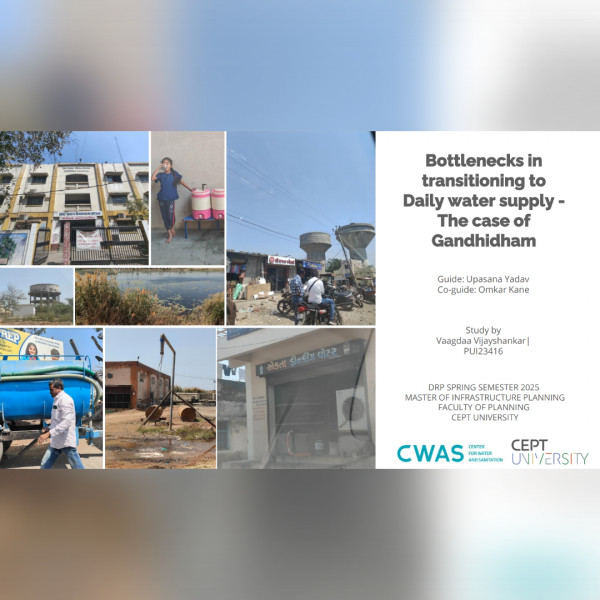Bottlenecks in transitioning to daily Water Supply - A case of Gandhidham
May 2025
In rapidly urbanising cities of the Global South, intermittent water supply systems perpetuate inequity, inefficiency, and public health risks. Gandhidham, a water-scarce city in Gujarat, exemplifies these challenges due to its arid climate, groundwater dependence, and ageing infrastructure. This study investigates the relationship between Gandhidham existing water supply infrastructure and its ability to transition to a daily supply system, assessing it with respect to identified study parameters: technical, financial, and governance barriers. The study identifies critical gaps in infrastructure, governance, and public trust. The built infrastructure of Gandhidham’s water system significantly impedes transition, with NRW rates exceeding 35% due to leakages and unmetered connections. Disparities in supply duration (2–8 hours/day) correlate with socio-economic inequity. However, case studies demonstrate that pressure management, smart metering, and community engagement can reduce losses by 15–20%. Institutional fragmentation and tariff resistance emerge as key governance hurdles. While global literature on continuous water supply transitions is extensive, few studies contextualize these challenges for semi-arid Indian cities with climatic and infrastructural constraints like Gandhidham. This paper fills that gap, offering evidence-based recommendations for phased infrastructure upgrades, policy reforms, and participatory governance models. Its findings have implications for water-stressed cities pursuing SDG 6 (clean water and sanitation) in resource-limited settings.
